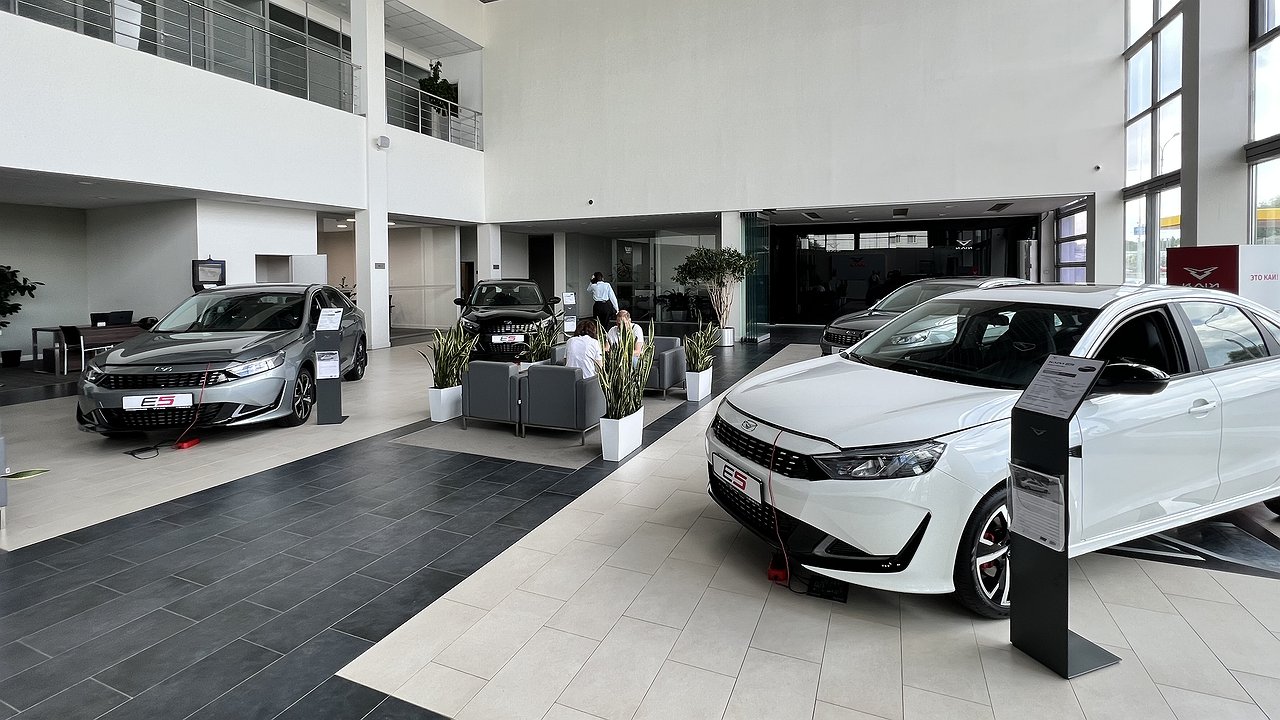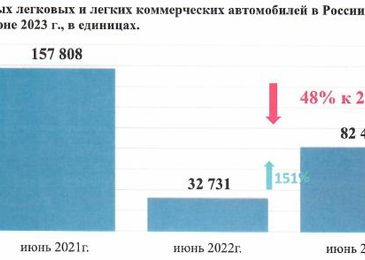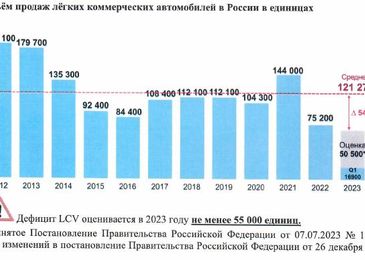We diet the hungry: why the government increased the disposal fee for new cars
- July 11, 2023
- 0
If there is a colossal shortage of cars in the country, is it really necessary to make life as difficult as possible for importers? This is some kind
If there is a colossal shortage of cars in the country, is it really necessary to make life as difficult as possible for importers? This is some kind

The charming and optimistic Denis Manturov, deputy prime minister and at the same time head of the Ministry of Industry and Trade of the Russian Federation, said last week that from August 1, the recycling fee for new and used cars, light commercial vehicles and trucks will be increased. Who specifically was hit? “The indexation of the scrappage fee is approved for both legal entities and private individuals who deliberately import imported cars for resale,” explained Denis Valentinovich with ease.
That is, those who have at least saved our crooked market from final collapse over the past year and a half and, to the best of their ability, have implemented the presidential directive on the organization of parallel imports will receive a hefty kick from the state. The minister’s right choice of words – deliberate resale – turned them into ordinary speculators, and this term, forgotten since Soviet times, is likely to reappear in the modern lexicon without notice.
On average, the scrap rate is indexed 1.7-3.7 times for cars, 2.5-3.4 times for light commercial vehicles and 1.7 times for trucks, the Ministry of Industry and Trade reports. Is it much or little? As AVTOVAZ president Maxim Sokolov explained, the 70% increase in salvage costs will be 178-00 thousand rubles for budget models like his company. Such a price increase for buyers is not morbid – because the manufacturer does not cover the tax costs at its own expense. But maybe the auto industry’s economy is doing so well that risky experiments are already acceptable? No and again no.
In June of this year, according to the data of the bureau “AUTOSTAT”, only 82,407 new passenger cars were registered in Russia. For comparison: in the same month of the last more or less solid year, which was 2021, 157,808 cars found a buyer. According to the results of the current year, the market shortfall, according to the most optimistic estimates, will reach half a million cars.
Abrupt gestures of power in a situation where the normal operation of the industry is as far away as the moon before the restoration of normal operation is incomprehensible to say the least. But seriously, they are destructive. But as mentioned above, the logic of the Ministry of Industry and Commerce is incomprehensible to the common man.
Therefore, representatives of the ministry explain: it turns out that everything started to protect the buyer and the dealer community. Personally, I find it somehow hard to believe that the buyer is just waiting for the most budget cars to increase in price by a few hundred thousand, and cars that are more expensive by an even larger amount. Yes, and the dealer community, which the Ministry of Industry and Commerce allegedly cares about so much, is in complete shock and awe.
This is according to a letter from the Russian Automobile Dealers Association (ROAD), addressed to Prime Minister Mikhail Mishustin, tearfully requesting a halt to the irate officials.
“The adopted resolution … will bring a number of negative consequences that will immediately cause significant, significant damage to the Russian car market. Thus, the volume of imports of new passenger cars and light commercial vehicles from the territory of China will decrease sharply. which will directly affect the growing Russian-Chinese relations and new projects in this field; car sales will not be able to recover to average normal values in the coming year; the car market will remain unfulfilled (the shortage will still be felt), vehicles will be forced to increase in price by about 120-600 thousand rubles. (tractors 12 tons), which will negatively affect the purchasing power of the population and the volume of demand; a significant proportion of manufacturing workers will lose their jobs due to declining demand. Thus, the government decision will have the opposite effect – there will be no protection of the Russian car industry and additional revenue for the budget, but a loss of revenue and sales.”
Of course, ROAD is primarily concerned with its own business interests and not with the public interest. But the opposite would be strange. And this is no reason to reject the reasonable, kind, eternal that is written in the letter. Kill import now – official, parallel, gray and whatever – is an initiative that smacks of madness. After all, it was imports that covered 53% of our car owners’ new car needs in June. At the same time, Russian brands controlled only 32%, of which 29% were produced by a single AVTOVAZ.
Meanwhile, the Minister of Industry and Commerce assured all interested people (including a significant portion of the country’s able-bodied population) with a black eye that the department he heads will continue to implement programs to support industry. For which we thank him very much.



The charming and optimistic Denis Manturov, deputy prime minister and at the same time head of the Ministry of Industry and Trade of the Russian Federation, said last week that from August 1, the recycling fee for new and used cars, light commercial vehicles and trucks will be increased. Who specifically was hit? “The indexation of the scrappage fee is approved for both legal entities and private individuals who deliberately import imported cars for resale,” explained Denis Valentinovich with ease.
That is, those who have at least saved our crooked market from final collapse over the past year and a half and, to the best of their ability, have implemented the presidential directive on the organization of parallel imports will receive a hefty kick from the state. The minister’s right choice of words – deliberate resale – turned them into ordinary speculators, and this term, forgotten since Soviet times, is likely to reappear in the modern lexicon without notice.
On average, the scrap rate is indexed 1.7-3.7 times for cars, 2.5-3.4 times for light commercial vehicles and 1.7 times for trucks, the Ministry of Industry and Trade reports. Is it much or little? As AVTOVAZ president Maxim Sokolov explained, the 70% increase in salvage costs will be 178-00 thousand rubles for budget models like his company. Such a price increase for buyers is not morbid – because the manufacturer does not cover the tax costs at its own expense. But maybe the auto industry’s economy is doing so well that risky experiments are already acceptable? No and again no.
In June of this year, according to the data of the bureau “AUTOSTAT”, only 82,407 new passenger cars were registered in Russia. For comparison: in the same month of the last more or less solid year, which was 2021, 157,808 cars found a buyer. According to the results of the current year, the market shortfall, according to the most optimistic estimates, will reach half a million cars.
Abrupt gestures of power in a situation where the normal operation of the industry is as far away as the moon before the restoration of normal operation is incomprehensible to say the least. But seriously, they are destructive. But as mentioned above, the logic of the Ministry of Industry and Commerce is incomprehensible to the common man.
Therefore, representatives of the ministry explain: it turns out that everything started to protect the buyer and the dealer community. Personally, I find it somehow hard to believe that the buyer is just waiting for the most budget cars to increase in price by a few hundred thousand, and cars that are more expensive by an even larger amount. Yes, and the dealer community, which the Ministry of Industry and Commerce allegedly cares about so much, is in complete shock and awe.
This is according to a letter from the Russian Automobile Dealers Association (ROAD), addressed to Prime Minister Mikhail Mishustin, tearfully requesting a halt to the irate officials.
“The adopted resolution … will bring a number of negative consequences that will immediately cause significant, significant damage to the Russian car market. Thus, the volume of imports of new passenger cars and light commercial vehicles from the territory of China will decrease sharply. which will directly affect the growing Russian-Chinese relations and new projects in this field; car sales will not be able to recover to average normal values in the coming year; the car market will remain unfulfilled (the shortage will still be felt), vehicles will be forced to increase in price by about 120-600 thousand rubles. (tractors 12 tons), which will negatively affect the purchasing power of the population and the volume of demand; a significant proportion of manufacturing workers will lose their jobs due to declining demand. Thus, the government decision will have the opposite effect – there will be no protection of the Russian car industry and additional revenue for the budget, but a loss of revenue and sales.”
Of course ROAD is primarily concerned with its own company interests and not with the public interest. But the opposite would be strange. And this is no reason to reject the reasonable, kind, eternal that is written in the letter. Kill import now – official, parallel, gray and whatever – is an initiative that smacks of madness. After all, it was imports that covered 53% of our car owners’ new car needs in June. At the same time, Russian brands controlled only 32%, of which 29% were produced by a single AVTOVAZ.
Meanwhile, the Minister of Industry and Commerce assured all interested people (including a significant portion of the country’s able-bodied population) with a black eye that the department he heads will continue to implement programs to support industry. For which we thank him very much.
Source: Avto Vzglyad
Donald Salinas is an experienced automobile journalist and writer for Div Bracket. He brings his readers the latest news and developments from the world of automobiles, offering a unique and knowledgeable perspective on the latest trends and innovations in the automotive industry.